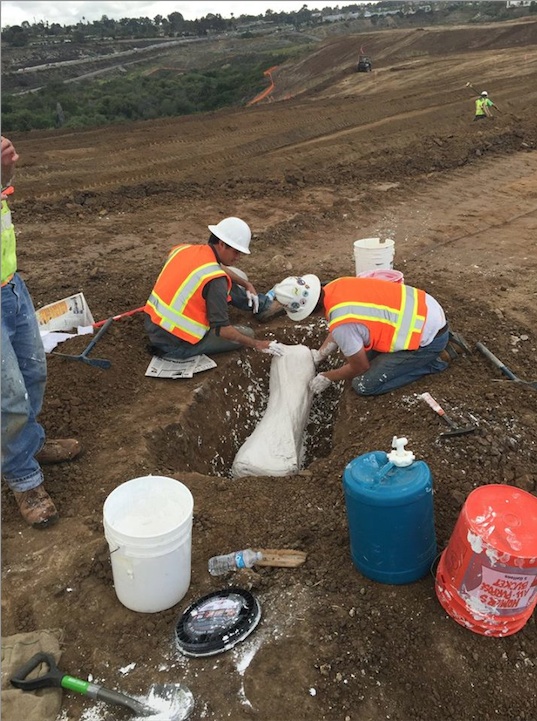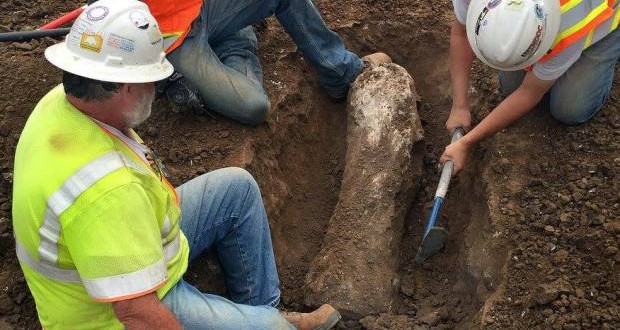An incredible find at a Southern California construction site: Fossils from the last Ice Age, including bones of ancient mammoths and a prehistoric bison.
According to The San Diego Union-Tribune, a new home development project in Carlsbad, Calif. has unearthed a cache of prehistoric animal remains, including the remnants of mammoths, horses, turtles, and a bison. The report said the bones are between 50,000 and 200,000 years old.
“The fossils have the potential to tell us a great deal about the climate, the environment, and the ecology of that time when they were living,” said Tom Deméré, curator of paleontology at the San Diego Natural History Museum. “They are direct connections with the past, an ancient ecosystem that was once common here. We can understand how climates can change by studying these ancient ecosystems.”
The bones were found after initial construction started this summer at the Quarry Creek development location. The Carlsbad City Council sanctioned plans for the new-home community in 2013, slated to be largely apartments and condominiums.

Substantial construction projects in California are mandated to have a paleontologist on location when considerable amounts of earth are moved. John Suster, the project’s superintendent told the Tribune he was amazed when the first fossils were discovered in July. Work was briefly paused while the researchers started their careful excavation endeavor.
“It’s just rolling hills, nothing special,” Suster said about the location. “I don’t think there’s any way you could have known.”
Stop the digging
When a potential fossil is discovered, it is sectioned off and work halts within that area as paleontologists move in, create a plaster, and remove the find.
Deméré said the bison fossil is the most uncommon and probably the most complete of the larger animals discovered at the project location. The precise species hasn’t been determined, but is thought to be either a giant bison or an antique bison.
“These are big animals, much larger than modern plains bison,” Deméré added.
He noted that an experienced paleontologist should be able to look at a site and know where fossils are likely to be located.
“You can see that it’s actually layered sediment,” he said. “It’s like pages in a book. You could call the title ‘The History of the Planet Earth.’”
The museum curator added more small fossils could still show up in the sediment paleontologists have collected along with the large pieces.
Agencies/Canadajournal
 Canada Journal – News of the World Articles and videos to bring you the biggest Canadian news stories from across the country every day
Canada Journal – News of the World Articles and videos to bring you the biggest Canadian news stories from across the country every day



